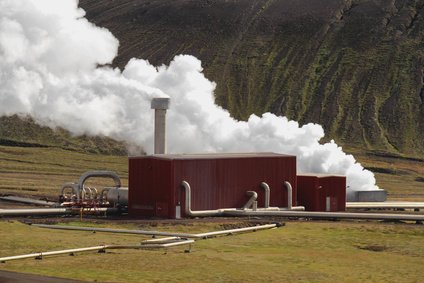How a geothermal power plant works, definition and types

The conditions for a geothermal power plant to function must be sufficient pressure. Another prerequisite is the degree of global warming and the associated depth. Both must be sufficient and achievable.
Dry steam, stress or binary circuit
The functioning of a geothermal power plant can be constructed in three types of design:
| Variant | Explanation |
| 1. | The "simplest" variant is the so-called dry steam model. Cold water is introduced into the ground and the steam produced during heating in the earth's interior is used directly by the steam turbine. |
| 2. |
As an alternative, heated water can be pumped into the ground, which continues to be led back up in a hot state. As it rises, it loses pressure, which leads to steam formation. A special tank further intensifies the steam formation from the pressure drop. The cooled but still hot water is fed back into the ground output from the tank and the steam is fed into the turbine. This model makes a geothermal power plant a gentler on resources. Both the water demand is reduced and the exploitation of the existing geothermal energy is weakened. |
| 3. |
In the third mode of operation, the warm water introduced into the ground and rising again forms its own cycle. In a heat exchanger, similar to a heat exchanger, the water heat is released into a second independent circuit. The heat transport fluid in the steam-generating secondary circuit generates steam more effectively than water due to a lower boiling point. |
Geothermal power plant: drilling depths and temperature requirements
The heat deposits in the ground determine whether a geothermal power plant can be operated. As is known from geothermal heat pumps, even smaller temperature differences are sufficient for heat yield. In order to be able to operate a geothermal power plant, water temperatures of at least 80 degrees Celsius must be present. Geothermal boreholes of up to 3000 metres are realised if the necessary temperatures are considered achievable.
The structure, structure and distribution of the heat layers in the earth's crust is very uneven. In order to keep the costs and technical implementation within economic limits, heat storage sites must be found and "drilled" in a targeted manner.
Technical development and prospects
A geothermal power plant faces several technical challenges:
- The temperature differences between the supply and return flow must be sufficient
- In addition, the temperature level in the heat reservoir is maintained through earth's own reheating
- Geologically, heat deposits are often fragile zones in which seismic movements are widespread
- The selection of a site is always fraught with a risk in terms of effort, costs and long-term yield
If new and more effective technologies are developed, especially with regard to binary circulation systems, an increasingly economically sensible expansion and use can also be thought of in Germany. Germany is still a geothermal developing country.